Your cart is currently empty!
Tag: Measures
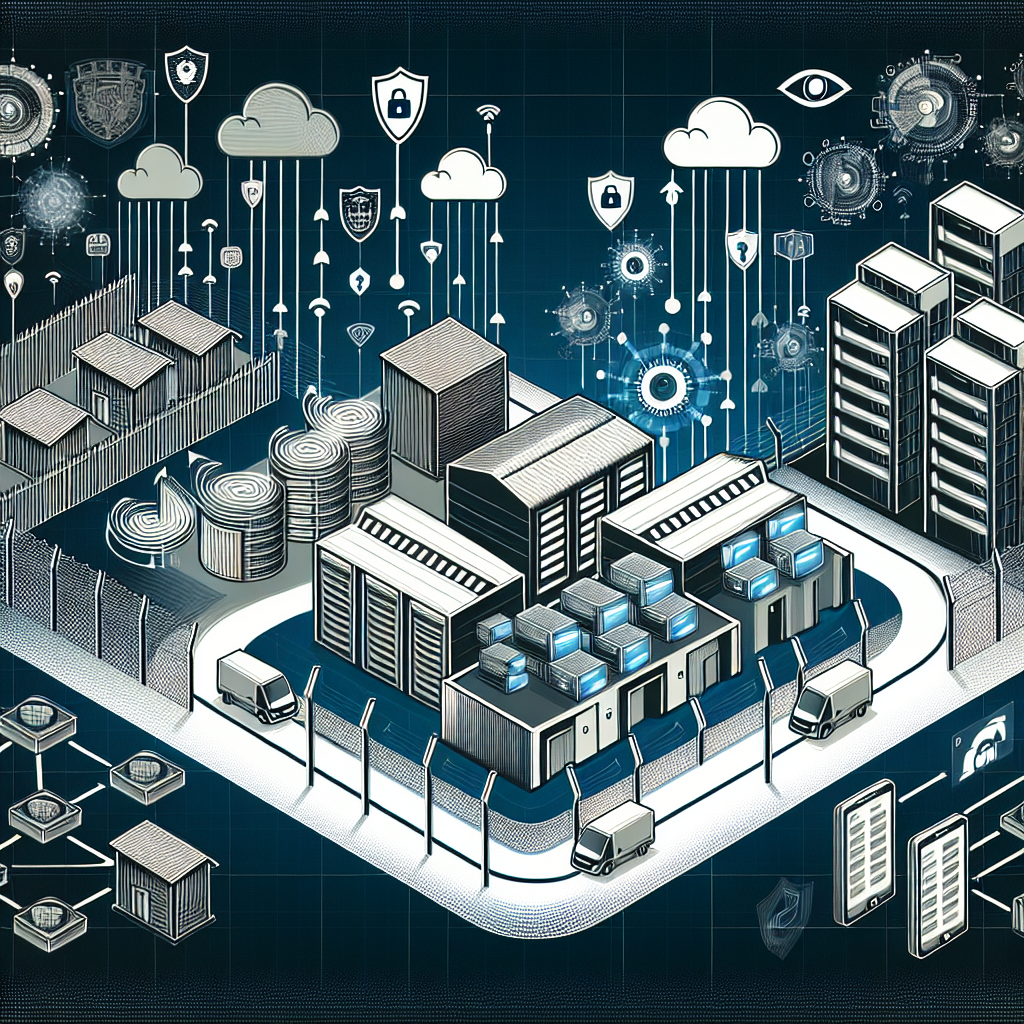
The Evolution of Data Center Security: From Physical to Cybersecurity Measures
Data centers have become a critical component of modern business operations, housing the servers, storage devices, and networking equipment that support everything from email communications to online transactions. As the importance of data centers has grown, so too has the need for robust security measures to protect the sensitive information stored within them.In the early days of data centers, security primarily focused on physical measures such as guards, locks, and surveillance cameras. These measures were designed to prevent unauthorized access to the facility and protect the hardware housed within. However, as data centers have evolved and become more interconnected with the outside world, the focus of security has shifted towards cybersecurity measures to protect against digital threats.
Cybersecurity measures in data centers include a range of technologies and protocols designed to protect against hacking, malware, and other cyber threats. Firewalls, encryption, and intrusion detection systems are just a few of the tools used to safeguard data center infrastructure from cyber attacks. Additionally, data centers often employ security best practices such as regular security audits, employee training, and strict access controls to ensure that only authorized personnel have access to sensitive data.
The evolution of data center security from physical to cybersecurity measures has been driven by the increasing sophistication of cyber threats and the growing importance of data in the digital economy. Data breaches can have serious consequences for businesses, including financial losses, damage to reputation, and legal repercussions. As a result, organizations are investing more resources than ever into securing their data center infrastructure.
In addition to protecting against external threats, data center security also encompasses measures to prevent insider threats, such as employees or contractors who may intentionally or unintentionally compromise data security. Background checks, access controls, and monitoring tools are all used to mitigate the risk of insider threats and ensure that data center security remains strong.
Overall, the evolution of data center security from physical to cybersecurity measures reflects the changing nature of the digital landscape and the increasing importance of data protection in today’s interconnected world. By implementing a comprehensive security strategy that combines physical and cybersecurity measures, organizations can ensure that their data center infrastructure remains secure and resilient in the face of evolving threats.
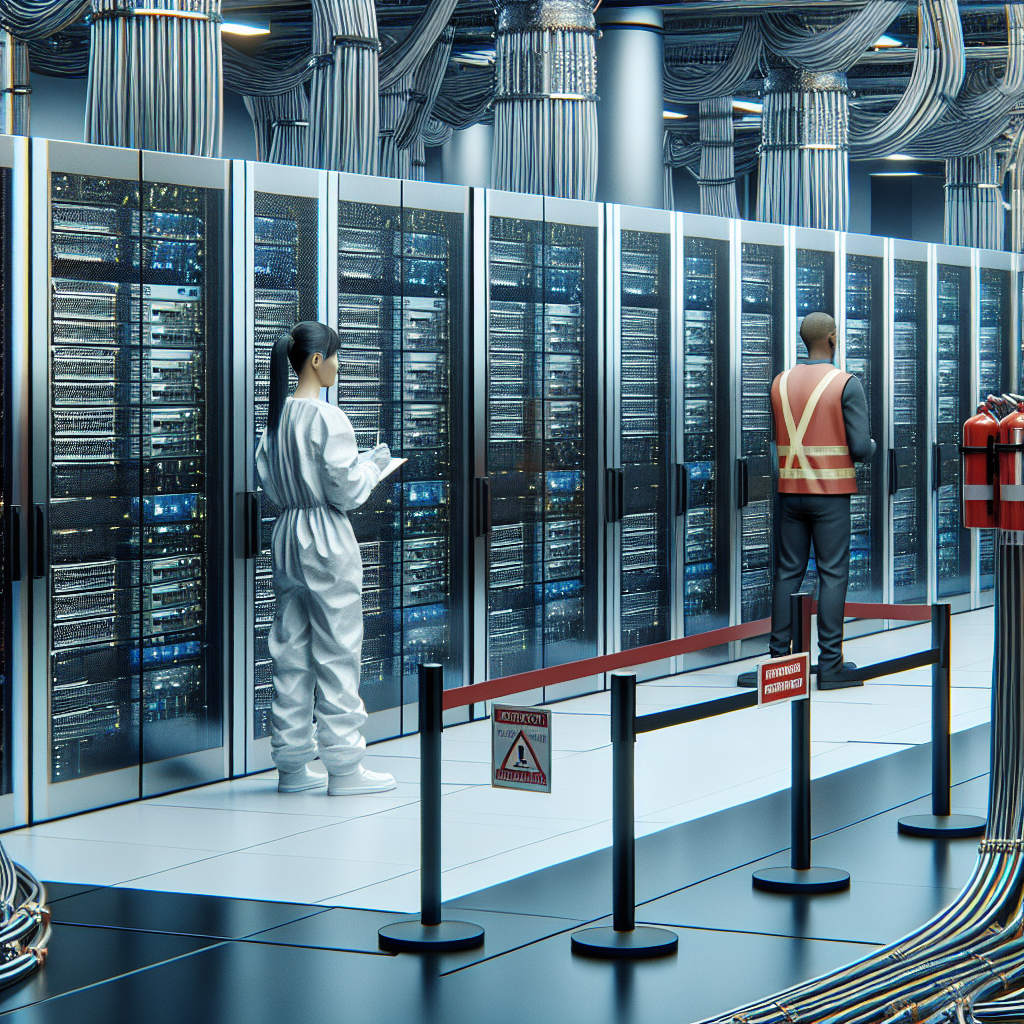
Data Center Safety Measures: How to Safeguard Your Critical IT Infrastructure
Data centers are the backbone of modern businesses, housing critical IT infrastructure that supports operations and stores sensitive data. With the increasing reliance on technology, ensuring the safety and security of data centers has become more important than ever. In this article, we will discuss some key safety measures that organizations can implement to safeguard their data centers and protect their critical IT infrastructure.1. Physical Security Measures
One of the first lines of defense for a data center is physical security measures. This includes access control systems, such as keycard access and biometric scanners, to restrict entry to authorized personnel only. Security cameras and surveillance systems can also help monitor the premises and deter unauthorized access. Additionally, perimeter fencing, gates, and security guards can further enhance the physical security of the data center.
2. Fire Detection and Suppression Systems
Fire is a major threat to data centers, as it can cause damage to equipment and result in data loss. Implementing fire detection and suppression systems is crucial to safeguarding the data center. Smoke detectors, heat sensors, and fire alarms can help detect fires early on, while fire suppression systems like sprinklers, gas-based systems, or foam extinguishers can quickly extinguish the flames and prevent further damage.
3. Environmental Monitoring
Data centers are sensitive to environmental factors such as temperature, humidity, and airflow. Monitoring these conditions is essential to prevent equipment overheating, which can lead to system failures and downtime. Environmental monitoring systems can alert data center operators to any deviations from optimal conditions, allowing them to take corrective action before any damage occurs.
4. Redundant Power Supply
Uninterrupted power supply is critical for data centers, as any power outage can disrupt operations and cause data loss. Implementing redundant power supply systems, such as backup generators, UPS units, and dual power feeds, can ensure continuous power supply to the data center in the event of a power failure. Regular testing and maintenance of these systems are essential to ensure they are functioning properly when needed.
5. Data Backup and Disaster Recovery
Despite all safety measures in place, disasters can still occur. Data centers should have robust data backup and disaster recovery plans in place to mitigate the impact of any unforeseen events. Regularly backing up data and storing it offsite, as well as testing disaster recovery procedures, can help minimize downtime and data loss in the event of a disaster.
In conclusion, safeguarding a data center and protecting critical IT infrastructure requires a comprehensive approach that includes physical security measures, fire detection and suppression systems, environmental monitoring, redundant power supply, and data backup and disaster recovery plans. By implementing these safety measures, organizations can ensure the reliability and security of their data centers and minimize the risk of downtime and data loss.
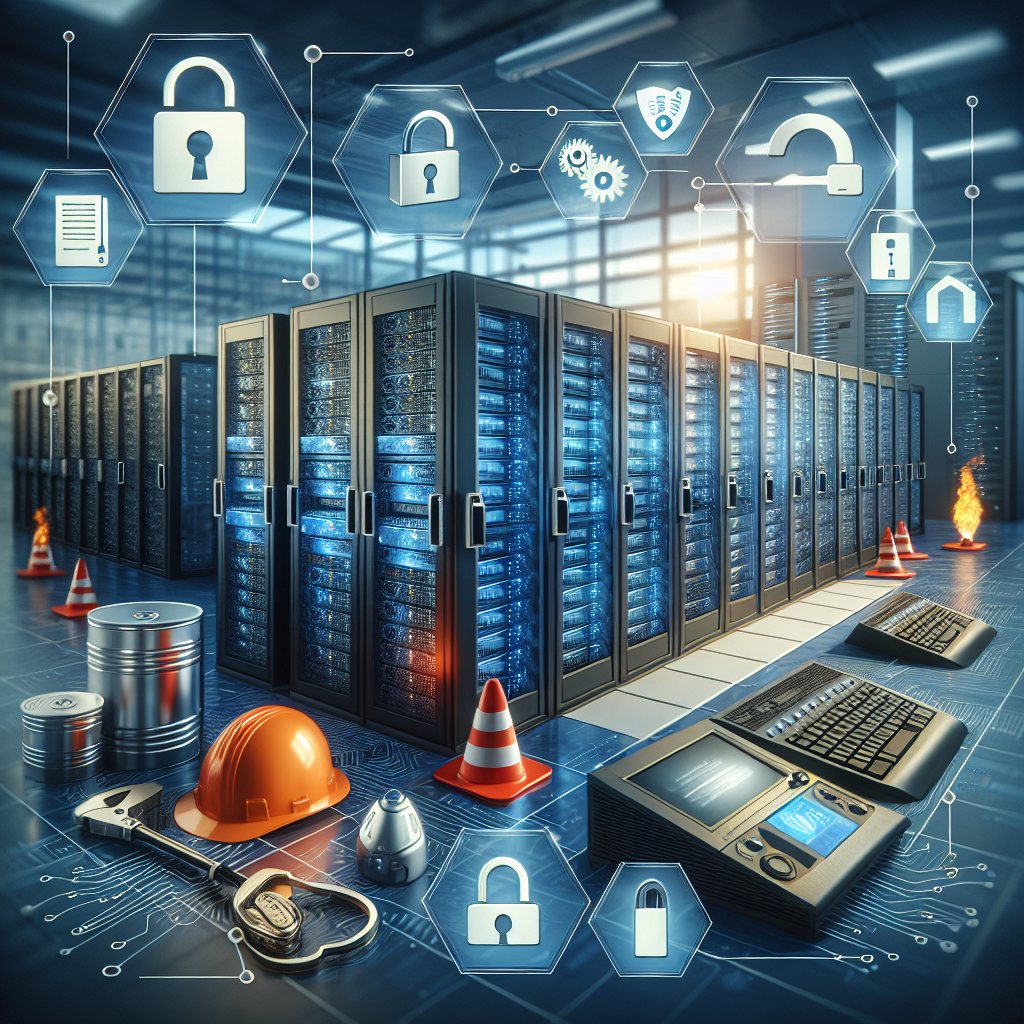
Protecting Your Data Center: Essential Safety Measures for IT Professionals
Data centers are the backbone of modern businesses, housing critical information and applications that keep operations running smoothly. As an IT professional, it is your responsibility to ensure the safety and security of these data centers to prevent any potential breaches or data loss. Here are some essential safety measures to protect your data center:1. Physical Security: One of the first lines of defense for your data center is physical security. Make sure that access to the data center is restricted to authorized personnel only. Implement biometric access controls, security cameras, and alarm systems to prevent unauthorized entry.
2. Fire Suppression Systems: Data centers are filled with sensitive equipment that can be easily damaged by fire. Install fire suppression systems such as sprinklers, fire extinguishers, and smoke detectors to quickly extinguish any potential fires and minimize damage.
3. Environmental Controls: Data centers are prone to overheating, which can cause equipment malfunctions and data loss. Implement environmental controls such as air conditioning units, temperature sensors, and humidity monitors to maintain optimal conditions for your equipment.
4. Backup Power: Power outages can cause data loss and disrupt operations in a data center. Install backup power systems such as uninterruptible power supplies (UPS) and generators to ensure that your data center remains operational during power outages.
5. Data Encryption: Encrypting data is essential to prevent unauthorized access to sensitive information. Implement strong encryption protocols to protect data both in transit and at rest within your data center.
6. Regular Maintenance: Regular maintenance of equipment and systems within the data center is essential to prevent downtime and ensure optimal performance. Schedule routine inspections, upgrades, and repairs to keep your data center running smoothly.
7. Employee Training: Educate employees on data center security best practices and protocols. Implement strict access controls, password policies, and security awareness training to prevent human errors that could compromise the security of your data center.
By implementing these essential safety measures, you can protect your data center from potential threats and ensure the security of your organization’s critical information. As an IT professional, it is your responsibility to prioritize data center safety and security to safeguard your organization’s operations and reputation.

Ensuring Data Center Security Through Preventative Maintenance Measures
Data centers are a critical component of modern businesses, serving as the hub for all digital operations and data storage. With the increasing reliance on technology and the rise of cyber threats, ensuring data center security has become more important than ever. One key aspect of data center security is preventative maintenance measures, which help to identify and address vulnerabilities before they can be exploited by malicious actors.Preventative maintenance measures involve regular inspections, testing, and repairs to ensure that all systems and equipment within the data center are functioning properly and securely. This includes monitoring the physical security of the data center, such as access control systems, surveillance cameras, and environmental controls, as well as the cybersecurity measures in place, such as firewalls, encryption, and intrusion detection systems.
Regular inspections of the data center infrastructure can help to identify any potential security risks, such as outdated hardware or software, faulty equipment, or environmental hazards. By addressing these issues proactively, businesses can reduce the likelihood of a security breach and minimize the impact of any potential downtime or data loss.
In addition to regular inspections, data center operators should also conduct routine testing of their security systems to ensure that they are functioning as intended. This includes testing the effectiveness of access control systems, conducting penetration testing to identify and address vulnerabilities, and monitoring the performance of cybersecurity measures to detect any suspicious activity.
Another important aspect of preventative maintenance measures is regular training for data center staff on security best practices and protocols. By educating employees on how to recognize and respond to security threats, businesses can create a culture of security awareness that helps to prevent breaches and mitigate risks.
Ultimately, ensuring data center security through preventative maintenance measures is essential for protecting sensitive data and maintaining the trust of customers. By proactively identifying and addressing security risks, businesses can reduce the likelihood of a security breach and minimize the impact of any potential downtime or data loss. Investing in preventative maintenance measures is a smart and cost-effective way to safeguard the integrity and security of data center operations.
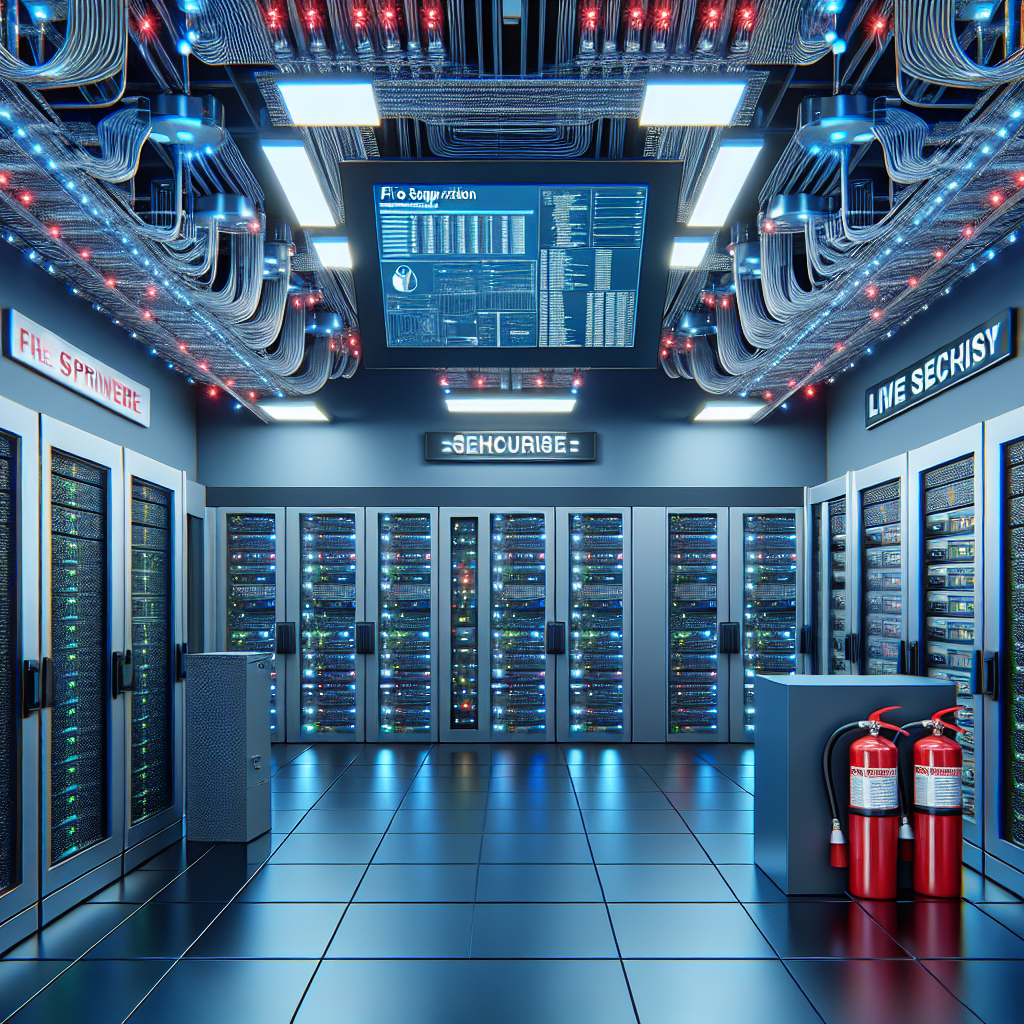
Maintaining Data Center Security: The Importance of Fire Suppression Measures
Data centers are an essential component of any organization’s IT infrastructure, housing critical equipment and data that are vital to the operation of the business. With the increasing reliance on technology, the importance of data center security cannot be overstated. One key aspect of data center security that often goes overlooked is fire suppression measures.Fires can have devastating consequences for data centers, causing damage to equipment, data loss, and downtime that can result in significant financial losses for the organization. Therefore, implementing effective fire suppression measures is crucial to protecting the data center and ensuring business continuity.
There are several reasons why fire suppression measures are important for data center security. First and foremost, data centers house a large amount of electrical equipment that generates heat and can be a fire hazard if not properly maintained. In the event of a fire, having a reliable fire suppression system in place can help to quickly extinguish the flames and prevent them from spreading, minimizing damage to equipment and data.
Secondly, data centers often contain sensitive and valuable information that must be protected at all costs. In the event of a fire, data loss can have serious consequences for the organization, including regulatory fines, reputational damage, and loss of customer trust. By implementing fire suppression measures, organizations can mitigate the risk of data loss and ensure that their critical information remains secure.
In addition to protecting equipment and data, fire suppression measures are also essential for ensuring the safety of personnel working in the data center. Fires can spread rapidly and pose a serious threat to the physical safety of employees. By having an effective fire suppression system in place, organizations can provide a safe working environment for their employees and minimize the risk of injury or harm in the event of a fire.
There are several different types of fire suppression systems that can be used in data centers, including water-based systems, gas-based systems, and foam-based systems. The choice of system will depend on factors such as the size of the data center, the types of equipment housed within it, and regulatory requirements.
Regardless of the type of system used, it is important for organizations to regularly test and maintain their fire suppression measures to ensure they are in good working order. This includes conducting regular inspections, testing alarms and sensors, and training employees on proper fire safety procedures.
In conclusion, maintaining data center security requires a multi-faceted approach that includes effective fire suppression measures. By implementing and maintaining reliable fire suppression systems, organizations can protect their equipment, data, and employees from the devastating consequences of fires. Investing in fire suppression measures is a critical aspect of data center security that should not be overlooked.
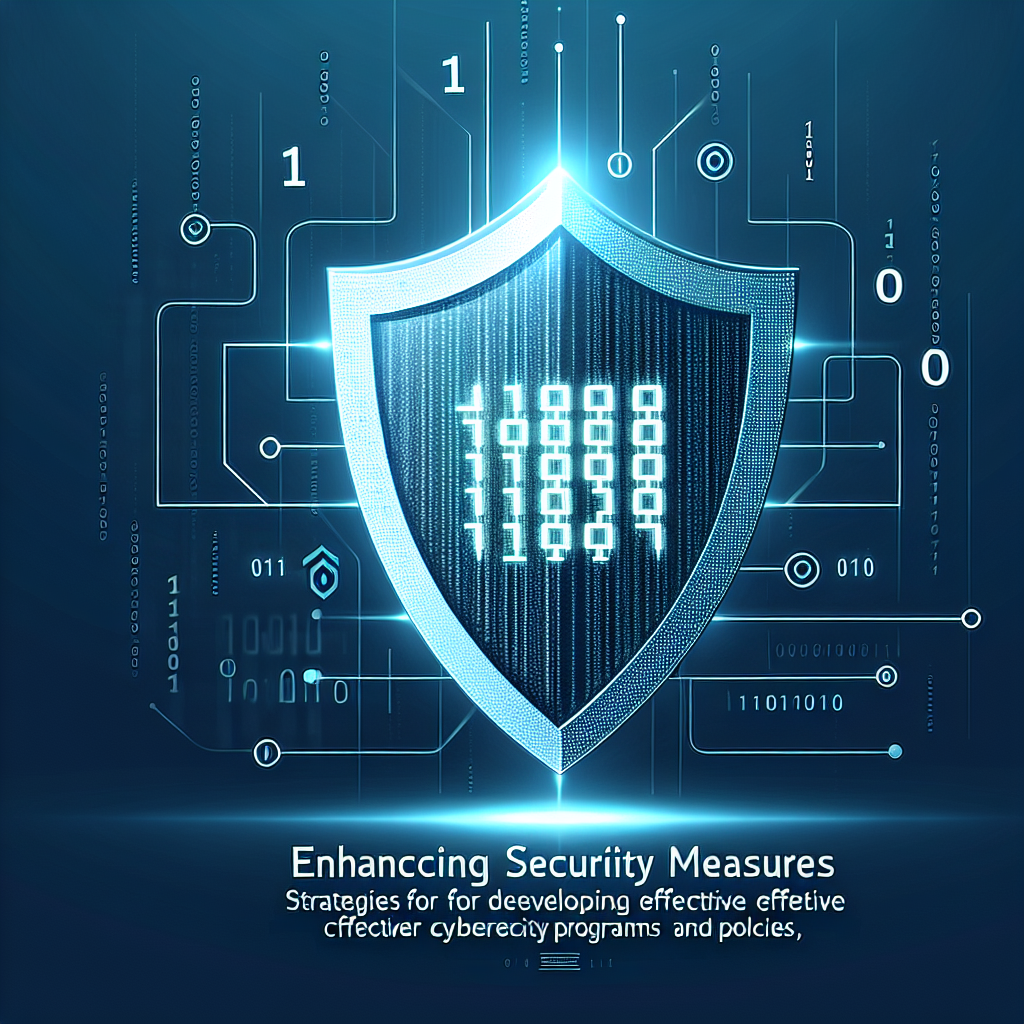
Enhancing Security Measures: Strategies for Developing Effective Cybersecurity Programs and Policies
In today’s digital age, cybersecurity has become a top priority for businesses and organizations of all sizes. With the increasing number of cyber threats and attacks, it is crucial for companies to develop effective cybersecurity programs and policies to protect their sensitive data and information. Enhancing security measures is essential to safeguarding against potential breaches and ensuring the safety of both the organization and its customers.One of the first steps in developing an effective cybersecurity program is to conduct a thorough risk assessment. This involves identifying potential vulnerabilities and threats within the organization’s systems and networks. By understanding the potential risks, companies can better prioritize their security measures and allocate resources accordingly.
Once the risks have been identified, companies can then develop a comprehensive cybersecurity policy that outlines the organization’s security protocols and procedures. This policy should cover a range of security measures, including data encryption, access controls, network monitoring, and incident response procedures. By clearly defining these measures, employees will have a better understanding of their roles and responsibilities in maintaining the organization’s cybersecurity.
In addition to developing a cybersecurity policy, companies should also invest in the latest security technologies and tools to enhance their security measures. This may include implementing firewalls, antivirus software, intrusion detection systems, and encryption technologies to protect sensitive data from cyber threats. Regularly updating and patching these technologies is also essential to staying ahead of evolving cyber threats.
Furthermore, employee training and awareness are critical components of any cybersecurity program. Employees are often the weakest link in an organization’s security defenses, as they may inadvertently click on malicious links or fall victim to phishing scams. By providing regular training on cybersecurity best practices and protocols, organizations can help employees better understand the importance of security measures and how to protect against potential threats.
Lastly, companies should regularly monitor and assess their cybersecurity programs to ensure their effectiveness. This may involve conducting regular security audits, penetration testing, and incident response exercises to identify and address any vulnerabilities or weaknesses in the organization’s security measures. By continuously evaluating and improving their cybersecurity programs, companies can better protect against cyber threats and safeguard their sensitive data and information.
In conclusion, enhancing security measures is essential for developing effective cybersecurity programs and policies. By conducting risk assessments, developing comprehensive security policies, investing in the latest security technologies, providing employee training, and regularly monitoring and assessing their security measures, organizations can better protect against potential cyber threats and ensure the safety of their data and information. Ultimately, investing in cybersecurity is an investment in the organization’s future success and reputation.
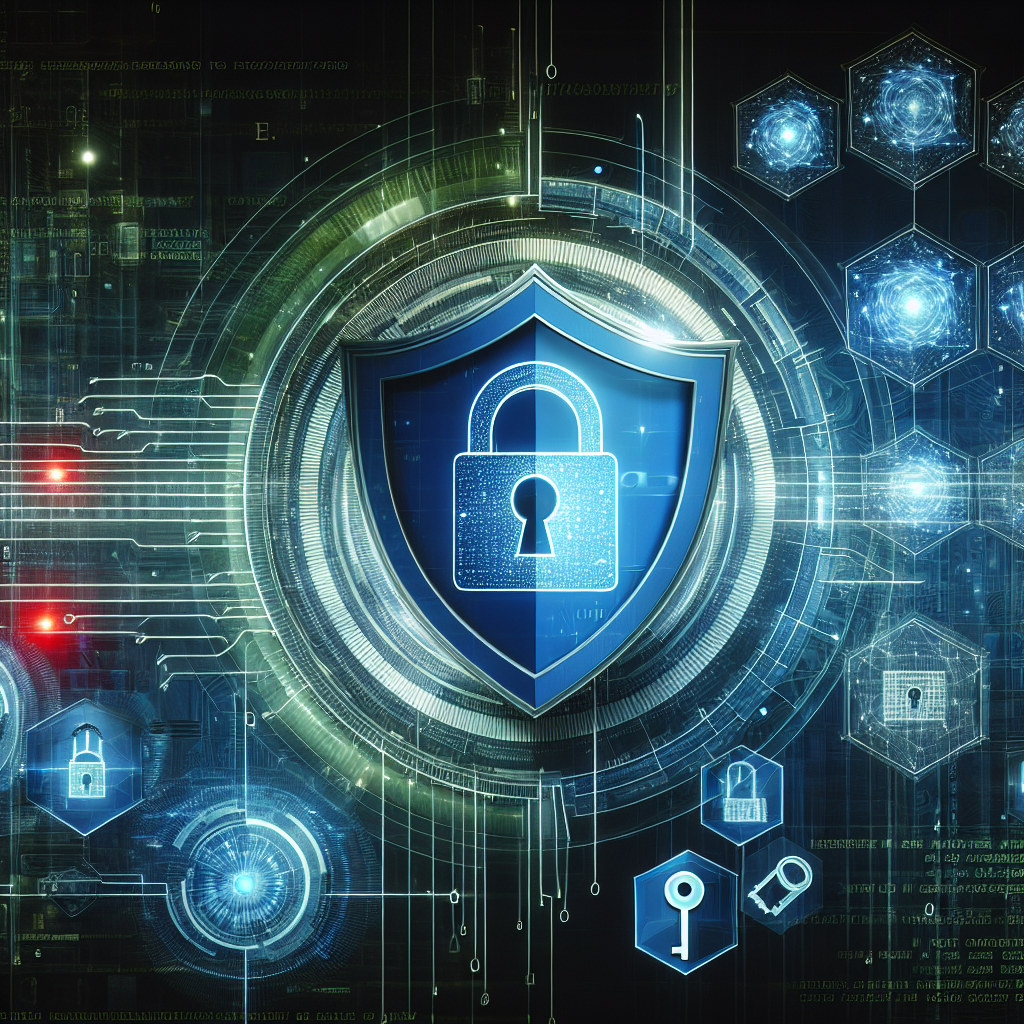
Enhancing Security Measures: The Essentials of Cybersecurity Programs and Policies
In today’s digitally driven world, cybersecurity has become a top priority for organizations of all sizes. With the increasing frequency and sophistication of cyber attacks, it is crucial for businesses to implement strong security measures to protect their sensitive data and networks. Enhancing security measures through comprehensive cybersecurity programs and policies is essential to safeguard against potential threats and ensure the safety of sensitive information.One of the key components of a robust cybersecurity program is implementing a strong security policy that outlines the organization’s approach to protecting its data and systems. This policy should include guidelines for data encryption, access controls, password management, and incident response procedures. It should also address employee training and awareness initiatives to educate staff on best practices for cybersecurity.
In addition to a security policy, organizations should also invest in cutting-edge security technologies to enhance their defenses against cyber threats. This includes deploying firewalls, antivirus software, intrusion detection systems, and encryption tools to protect data in transit and at rest. Regularly updating and patching these technologies is crucial to ensure they are effective against the latest threats.
Furthermore, organizations should conduct regular security audits and assessments to identify vulnerabilities in their systems and address them proactively. This includes performing penetration testing to simulate a cyber attack and assess the organization’s readiness to respond to such threats. By conducting these assessments regularly, organizations can stay ahead of potential threats and strengthen their cybersecurity posture.
Another essential aspect of enhancing security measures is establishing a strong incident response plan to effectively manage and mitigate the impact of a cyber attack. This plan should outline the steps to be taken in the event of a security breach, including notifying stakeholders, containing the incident, and restoring systems and data. Regularly testing and updating this plan is essential to ensure it remains effective in the face of evolving threats.
Ultimately, enhancing security measures through comprehensive cybersecurity programs and policies is essential for organizations to protect their sensitive data and networks from cyber threats. By implementing strong security policies, investing in cutting-edge technologies, conducting regular assessments, and establishing an incident response plan, organizations can strengthen their defenses and safeguard against potential cyber attacks. In today’s digital landscape, cybersecurity is not just a priority – it is a necessity.
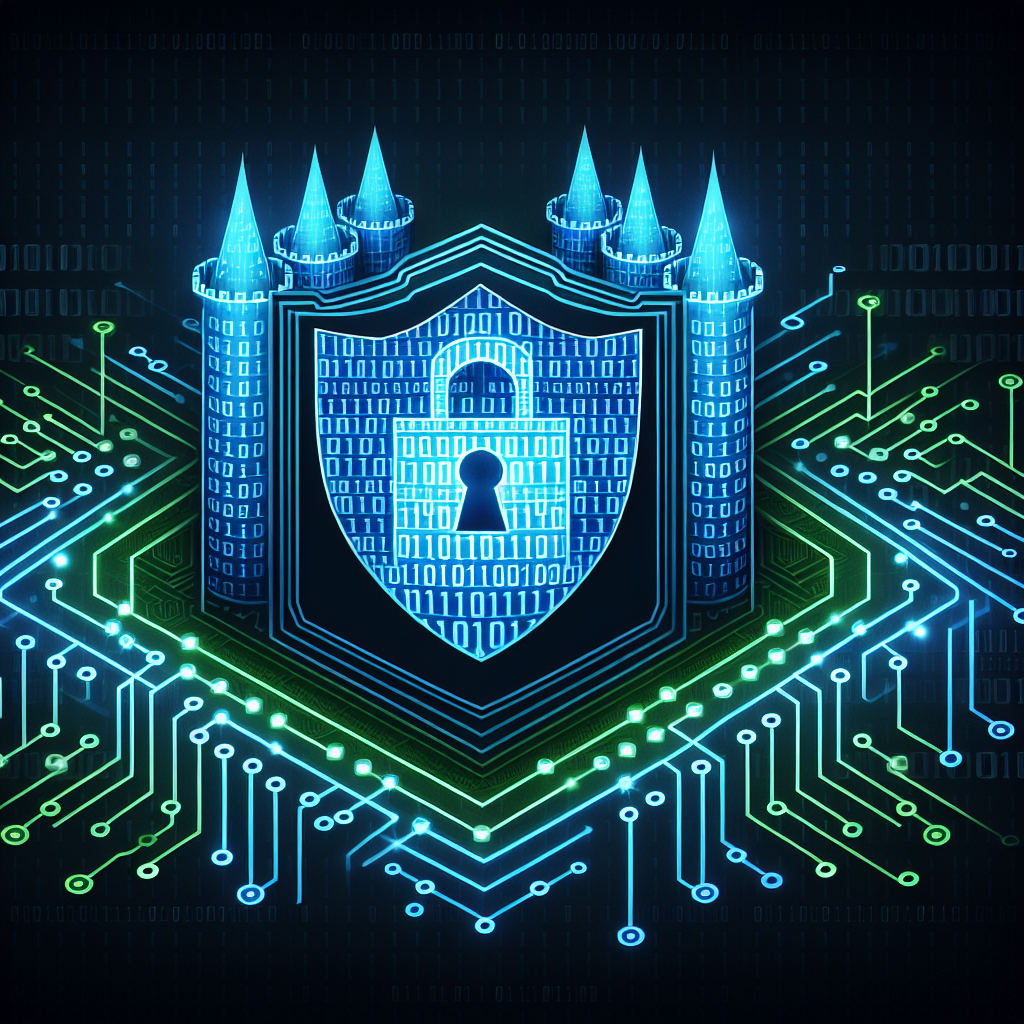
Enhancing Security Measures: Strategies for Developing Cybersecurity Programs and Policies
In today’s digital age, cybersecurity has become a top priority for organizations of all sizes. With the increasing threat of cyber attacks, it is crucial for businesses to implement robust security measures to protect their sensitive data and prevent costly breaches. Developing effective cybersecurity programs and policies is essential to safeguarding your organization’s assets and maintaining the trust of your customers.One of the first steps in enhancing security measures is to conduct a thorough risk assessment. This involves identifying potential vulnerabilities in your systems and networks, as well as evaluating the potential impact of a cyber attack on your business. By understanding your organization’s specific risks, you can create a tailored cybersecurity program that addresses your most pressing concerns.
Once you have identified your risks, it is important to develop a comprehensive cybersecurity policy that outlines the guidelines and procedures for protecting your data and systems. This policy should cover a range of security measures, including access controls, network monitoring, encryption, and incident response protocols. It is important to regularly review and update your cybersecurity policy to ensure that it reflects the latest threats and best practices in the industry.
Training and education are also key components of a successful cybersecurity program. Employees are often the weakest link in an organization’s security defenses, so it is important to provide regular training on best practices for handling sensitive information and recognizing potential threats. By raising awareness and promoting a culture of cybersecurity within your organization, you can help prevent human error from compromising your security measures.
In addition to internal measures, it is also important to work with third-party vendors and partners to ensure that they are following best practices for cybersecurity. This may involve conducting security assessments of their systems and networks, as well as requiring them to adhere to specific security standards in their contracts. By holding your vendors accountable for their cybersecurity practices, you can reduce the risk of a breach through a third-party connection.
Regular monitoring and testing are essential components of a successful cybersecurity program. By monitoring your systems for suspicious activity and conducting regular penetration tests, you can identify potential vulnerabilities before they are exploited by malicious actors. It is important to have a response plan in place in the event of a security incident, so that you can quickly contain the breach and minimize the impact on your business.
In conclusion, developing effective cybersecurity programs and policies is essential for protecting your organization’s data and systems from cyber threats. By conducting a thorough risk assessment, developing a comprehensive cybersecurity policy, providing training and education to employees, working with third-party vendors, and implementing regular monitoring and testing, you can enhance your security measures and reduce the risk of a costly breach. By taking proactive steps to strengthen your cybersecurity defenses, you can safeguard your organization’s reputation and maintain the trust of your customers in an increasingly digital world.
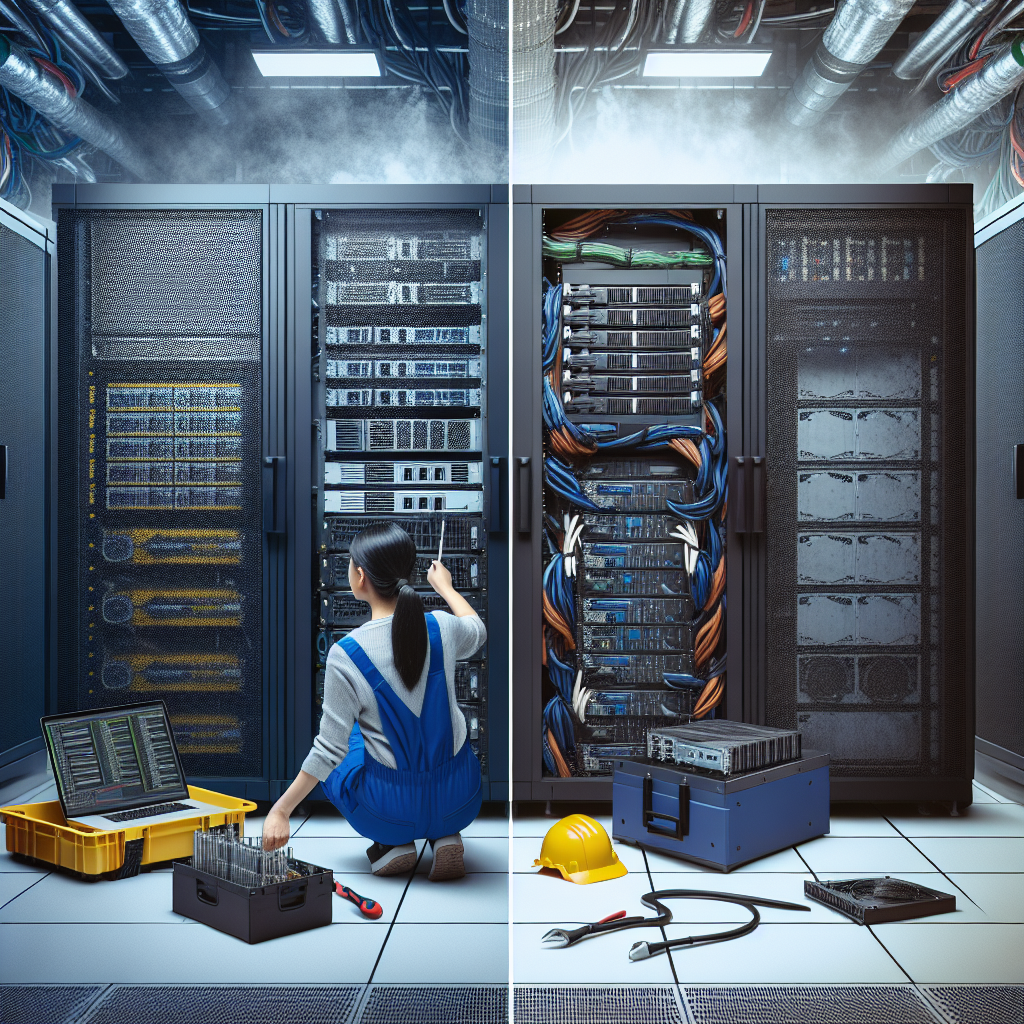
Investing in Maintenance: How Preventative Measures Can Save Your Data Center Equipment
In today’s technology-driven world, data centers are essential for businesses to store and manage their data. With the increasing reliance on data centers, it is more important than ever to invest in maintenance and preventative measures to ensure that equipment stays running smoothly and efficiently.One of the main reasons why preventative maintenance is crucial for data center equipment is to avoid costly downtime. Downtime can have a significant impact on a company’s operations, leading to lost revenue and damaged reputation. By implementing regular maintenance checks and servicing, potential issues can be identified and resolved before they escalate into major problems that could result in downtime.
Preventative maintenance also helps to prolong the lifespan of data center equipment. Regularly servicing equipment, cleaning out dust and debris, and replacing worn-out parts can help to prevent premature failure and extend the life of the equipment. This not only saves money on costly repairs or replacements but also ensures that the equipment continues to perform at its optimal level.
Investing in maintenance also helps to improve energy efficiency in data centers. Over time, equipment can become less efficient due to dust buildup, worn-out parts, or improper settings. By regularly maintaining and servicing equipment, data center managers can ensure that their equipment is running at peak performance, reducing energy consumption and lowering operational costs.
In addition to these benefits, investing in maintenance can also help to improve the overall safety and security of data centers. Regular checks and servicing can help to identify potential fire hazards, electrical issues, or security vulnerabilities that could pose a risk to the data center and its operations.
Overall, investing in maintenance and preventative measures for data center equipment is a wise decision for any business. By taking proactive steps to ensure the health and efficiency of equipment, companies can avoid costly downtime, prolong the lifespan of their equipment, improve energy efficiency, and enhance the safety and security of their data centers. It’s a small investment that can lead to significant cost savings and peace of mind in the long run.

Proactive Measures for Disaster Recovery: Protecting Your Data and Systems
In today’s digital age, data is the lifeblood of any organization. From customer information to financial records, ensuring the safety and security of this data is crucial for the success and continuity of a business. However, disasters can strike at any time, whether it be a natural disaster like a hurricane or a man-made event like a cyberattack. This is why it is essential for organizations to have proactive measures in place for disaster recovery to protect their data and systems.One of the first steps in disaster recovery planning is to conduct a thorough risk assessment. This involves identifying potential threats and vulnerabilities that could impact the organization’s data and systems. By understanding the risks, organizations can develop a comprehensive disaster recovery plan that addresses each potential scenario.
Another important proactive measure for disaster recovery is to regularly back up data. Having multiple copies of data stored in different locations ensures that even if one system fails, the data can still be retrieved from another source. It is also important to test the backups regularly to ensure they are working properly and can be easily restored in the event of a disaster.
In addition to backing up data, organizations should also have a plan in place for restoring systems and applications in the event of a disaster. This may involve having spare hardware on hand, as well as pre-configured software that can be quickly deployed to minimize downtime. Regularly testing these systems and procedures is essential to ensure they will work effectively when needed.
Another proactive measure for disaster recovery is to implement security measures to protect data from cyber threats. This may include firewalls, antivirus software, and encryption to prevent unauthorized access to sensitive information. Regularly updating security measures and conducting security audits can help identify and address any vulnerabilities that could be exploited by hackers.
Finally, it is important for organizations to communicate their disaster recovery plan to all employees and stakeholders. This ensures that everyone is aware of the procedures to follow in the event of a disaster and can act quickly to minimize the impact on the organization. Regular training and drills can help ensure that everyone knows their role and responsibilities in the event of a disaster.
In conclusion, proactive measures for disaster recovery are essential for protecting data and systems in today’s digital world. By conducting risk assessments, regularly backing up data, implementing security measures, and communicating the disaster recovery plan to all stakeholders, organizations can minimize the impact of disasters and ensure the continuity of their business operations. Investing in disaster recovery planning now can save organizations time, money, and reputational damage in the long run.
